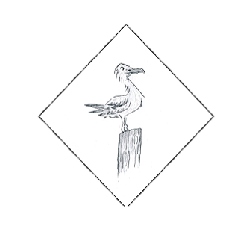DISCLAIMER: These opinions and views are those of the individuals concerned and not those of the University of Southampton.



Click for Poster
Results:
The results of the investigation show two main seabed substrates sublittoral sand/ gravel , sublittoral sediment, with isolated rock outcroppings as indicated on the right hand image.
Seabed substrates were dominated by Saccharina (Sugar kelp) forests and Zostra marina (eelgrass meadows) respectively. Spatial comparisons of the habitat map and previous iterations of mapping for this area, show the expansion of eelgrass habitat into areas in which previous surveys indicated that there was none.
Habitat Map -
Discussion and Conclusions:
The side scan sonar is limited due to the potential of artefacts appearing on the paper trace that can lead to misinterpretation of the true seafloor substrate composition. Therefore, to validate the sonar scan, ground truthings (Video 1&2, Van Veen grab) were important to the investigation.
The area surveyed exhibits two stable ecosystem states.
Eelgrass meadows grow well in sandy and muddy shore ecosystems between 2 and 15m depth. Settlement and propagation of this habitat rely on local substrate following its evolutionary roots from flowering land plants Zostera spp. and can encourage stable sediment.
The alternate substrate type observed was dominated by Sugar Kelp forests. Sugar kelp requires suitable sized substrate for anchorage and can tolerate depths of up to 30m. The differences in substrate and depth makes it unlikely that the two dominant species to coincide. This survey of seabed substrate, therefore, both outlines potential expansion of these habitats but also defines limits for their growth that may be useful in predictions.
It is useful to consider marine benthic habitat due to the potential ecosystem services these habitats provide to us. Eelgrass meadows act as a biocoenosis for many local species and so are of notable value.
Clusters of eelgrass stabilise the local sediment encouraging deposition and eelgrass fronds reduce turbidity in the surrounding water. These qualities make it an attractive nursery for several species of commercially viable fish and bivalves including the Pacific Herring, Atlantic Cod & Blue Mussel.
Evidence of Zostera marina expansion in the Fal is therefore promising news for the present and future health of the estuary. In large clusters, Zostera spp. promote biodiversity and may continue to be an important asset to the local marine system.
GEOPHYSICAL HABITAT MAPPING:
| Results and Discussion |
| Results |
| Discussion and Conclusion |
| Results |
| Discussion and Conclusion |
| Results |
| Discussion and Conclusion |
| Methodology Continued .. |